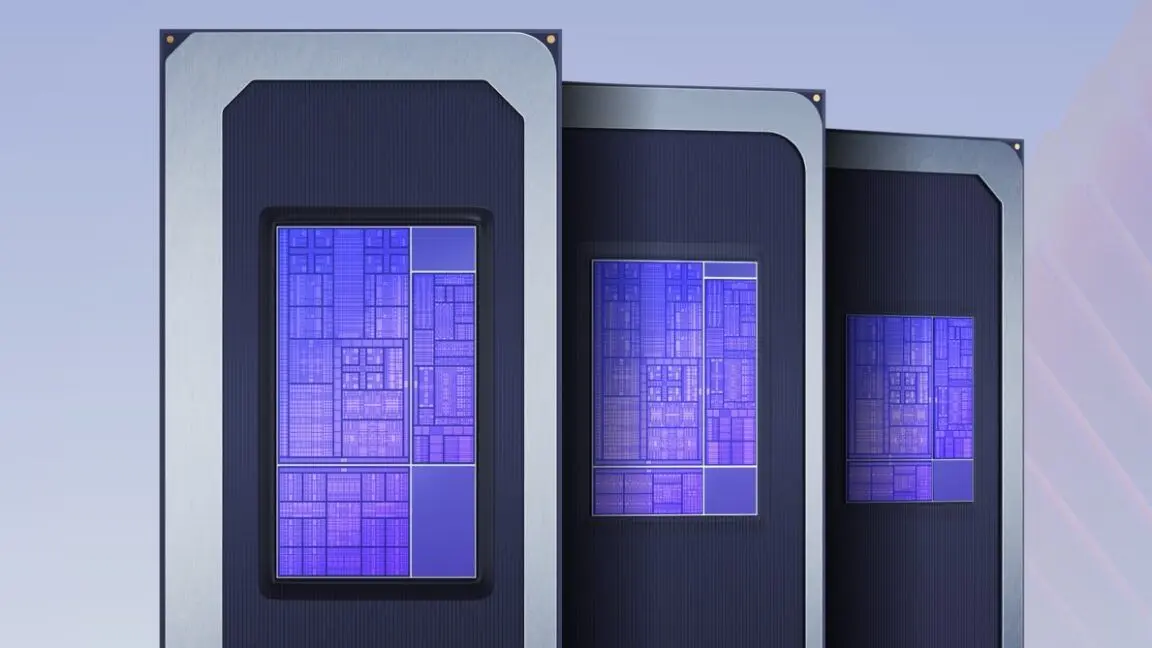Intel's Xe2 Battlemage GPU: A Game-Changer for Integrated Graphics
2 Sources
2 Sources
[1]
Intel says Xe2 'Battlemage' GPU inside of Lunar Lake CPUs is the 'world's best built-in GPU'
Intel's new Core Ultra 200V series "Lunar Lake" processors ship with next-gen Xe2 "Battlemage" integrated GPUs that offer some gigantic improvements in performance, right after AMD launches its Ryzen AI 300 series "Strix Point" APUs with upgraded RDNA 3.5-based Radeon 890M GPUs. The new Xe2 "Battlemage" GPU has a 50% performance increase over Xe "Alchemist" inside of Meteor Lake, with more improvements in ray tracing through improved ray tracing units, better utilization of the CPU cores versus Alchemist Xe-LPG GPUs.; Intel compares its Xe GPUs on the Core Ultra 7 155H "Meteor Lake" CPU against the new flagship Core Ultra 9 288V "Lunar Lake" CPU in a bunch of games, delivering a 31% uplift in performance, and in some games, over 60-70% more performance over Alchemist. Very nice to see. The company compares its new Xe2 "Battlemage" GPU inside of Lunar Lake against Qualcomm's integrated Adreno GPU inside of its new Snapdragon X processors, with the Adreno GPU failing to run 23 of the games in Intel's test suite. This is because Qualcomm's Snapdragon processor is an Arm-based chip, not capable of running games made for x86 (regular processors from Intel and AMD). The bigger comparison is between Battlemage and RDNA 3.5, with Intel claiming to have its Xe2 GPU being 16% faster than the Radeon 890M inside of Strix Point. This is the new Arc A140V GPU, compared against the Radeon 890M, and the new Xe2 "Battlemage" GPU is keeping up, or besting the RDNA 3.5 GPU in some games. Another impressive feat for Lunar Lake. It's not just raw GPU hardware anymore, but the software and graphics division have forged ahead with Battlemage and Xe2 launches with over 120 games that support XeSS upscaling. This means that the integrated GPU inside of Lunar Lake will have faster performance through its new Xe2 GPU architecture, but also improved performance again through XeSS through the beefed-up XMX hardware on the SoC compared to Meteor Lake. With XeSS enabled and on Performance Mode, Lunar Lake is capable of a 62% performance improvement, and better yet, if you're hitting 80FPS to 100FPS, you could take the Quality Mode preset and enjoy a stable 60FPS with a better-looking game. Intel wouldn't launch a new GPU architecture without mentioning ray tracing, with Xe2 packing 30% faster RT performance and a 99% percentile over 30FPS. The new Xe2 RT engine is a fully functional RT implementation, running through the DirectX12 Ultimate API.
[2]
Intel Core Ultra 200V set new benchmark for integrated GPUs | Digital Trends
Despite all the talk around efficiency and AI performance for Intel's new Core Ultra Series 2 processors, codenamed Lunar Lake, the real star of the show just might just be its integrated GPU. I got all the details at a special event in Berlin just ahead of IFA 2024, and I walked away very excited for what the new Xe2 graphics architecture could offer, positioning Intel as the leader in graphics solutions for low-powered, ultra-thin laptops. Recommended Videos The integrated GPU features up to 8 cores, 64 vector engines, 8MB of cache, and support for DirectX 12 Ultimate, all while utilizing LPDDR memory on package. It also includes improved XeSS (Xe Super Sampling) performance and XMX (Xe Matrix Extensions) AI engines, which enhance upscaling and raytracing capabilities. There are two variants available: the 8-core Intel Arc 140V and the 7-core Intel Arc 130V, with clock speeds varying by SKU. Intel demonstrated the GPU's power by testing a range of games at 1080p with medium graphics settings on the Core Ultra 9 288V (140V GPU). The results showed a 31% performance improvement over the previous generation Core Ultra 7 155H, 68% faster speeds compared to Qualcomm's Snapdragon X Elite X1E-84-100, and a 16% lead over AMD's Ryzen AI 9 HX 370. While AMD's Strix Point holds its own in titles like Cyberpunk 2077 and Hogwarts Legacy, Intel's integrated GPU outperforms in the majority of benchmarks, particularly against Qualcomm, whose Snapdragon X Elite struggled to run over half of the tested games. What's particularly noteworthy is that these benchmarks were achieved without any super sampling enabled, and Intel's new integrated GPU is capable of running ray-traced games at acceptable frame rates. Considering these processors are aimed at thin and light notebooks rather than dedicated gaming rigs, the performance is especially impressive. However, Intel's Xe2 GPU is expected to feature in at least one gaming device, the upcoming MSI Claw 8 AI+ gaming handheld, which will be powered by the Core Ultra 200V. Robert Hallock, VP and General Manager at Intel's Client AI and Technical Marketing, confirmed the same, although he didn't confirm the SKU. I got a chance to see the device in action for a short amount of time, but sadly I wasn't allowed to check the specifications, power consumption or frame rates during the demo. At the launch event, Intel also showcased the performance and efficiency of the new Core Ultra Series 2 chips through a series of demos. One notable demo compared two Lunar Lake-powered laptops, one with a Core Ultra 9 288V and the other with a Core Ultra 7 258V, against notebooks running Qualcomm's Snapdragon X Elite and AMD's Ryzen AI 9 HX 370. Both Intel-powered machines delivered 5-10% higher average frame rates while drawing similar or lower power compared to their Qualcomm and AMD counterparts. Another demo highlighted the significant gen-to-gen power efficiency improvement when running a 4K YouTube video using the AV1 codec, with the Lunar Lake laptop consuming half the power of the previous-gen Meteor Lake model. Overall, early impressions of Intel's Xe2-powered GPU and the new Core Ultra Series 2 processors are highly positive. Intel finally has an answer for consumers looking for a thin and light notebook that can offer long battery life and at the same time have enough grunt to run games at a stable 60 fps. The Lunar Lake-powered notebooks are expected to hit the market soon, and we'll be able to verify these performance claims in due course. Until then, stay tuned for further updates as these new devices become available.
Share
Share
Copy Link
Intel claims its upcoming Xe2 Battlemage GPU, integrated into Lunar Lake CPUs, will be the world's best built-in graphics solution. This development promises significant improvements in integrated GPU performance.

Intel's Bold Claim for Integrated Graphics
Intel has made a striking announcement about its forthcoming Xe2 Battlemage GPU, integrated into the Lunar Lake CPUs. The tech giant asserts that this new graphics solution will be "the world's best built-in"
1
. This bold claim has sparked interest in the tech community, particularly given Intel's recent efforts to compete in the discrete GPU market.The Xe2 Battlemage Architecture
The Xe2 Battlemage represents the next generation of Intel's graphics architecture, following the current Xe HPG found in Arc GPUs. While specific details about the architecture remain under wraps, Intel's confidence suggests significant improvements over its predecessors
2
.Integration with Lunar Lake CPUs
Intel plans to integrate the Xe2 Battlemage GPU into its Lunar Lake CPUs. This integration is crucial, as it allows for better performance and power efficiency compared to discrete GPUs. Lunar Lake is expected to launch in 2024, targeting ultra-low power devices like thin-and-light laptops
1
.Performance Expectations
While Intel hasn't provided specific benchmarks, the claim of being the "world's best built-in" GPU sets high expectations. This suggests that Intel is aiming to surpass the integrated graphics solutions offered by competitors like AMD and Apple
2
.Implications for the GPU Market
Intel's focus on integrated graphics could have significant implications for the GPU market. If the Xe2 Battlemage lives up to Intel's claims, it could reduce the need for discrete GPUs in many laptops, potentially affecting companies like NVIDIA and AMD
2
.Related Stories
Intel's Graphics Journey
This announcement is part of Intel's broader strategy to become a major player in the graphics market. The company has been investing heavily in GPU technology, from integrated solutions to discrete graphics cards. The Xe2 Battlemage represents a crucial step in this journey
1
.Future Outlook
As we await more details and independent benchmarks, Intel's claim has certainly set high expectations for the Xe2 Battlemage. If successful, this could mark a significant shift in the laptop market, potentially offering high-performance graphics in ultra-portable devices without the need for discrete GPUs
2
.References
Summarized by
Navi
[1]
Related Stories
Recent Highlights
1
AI Chatbots Sway Voters More Effectively Than Traditional Political Ads, New Studies Reveal
Science and Research

2
OpenAI declares code red as Google's Gemini 3 gains 200 million users in three months
Technology

3
Trump approves Nvidia H200 chip exports to China with 25% revenue cut, defying Senate concerns
Policy and Regulation







